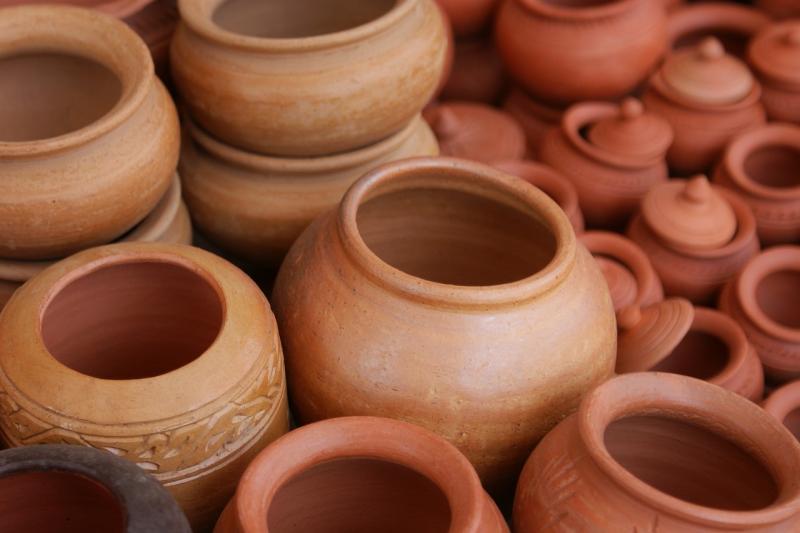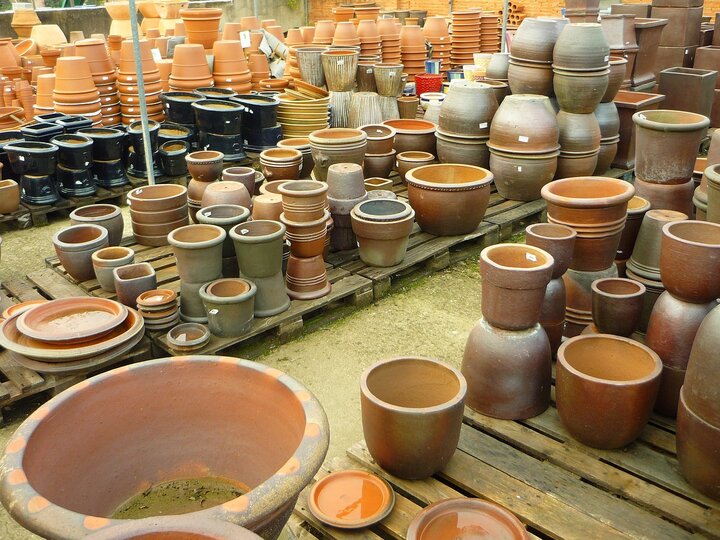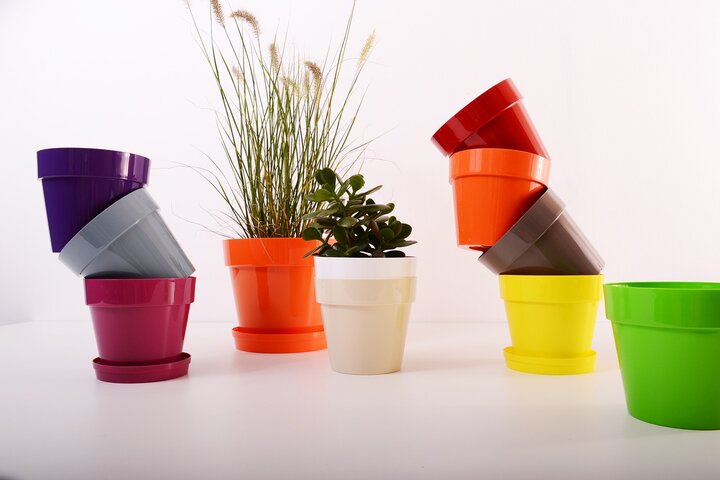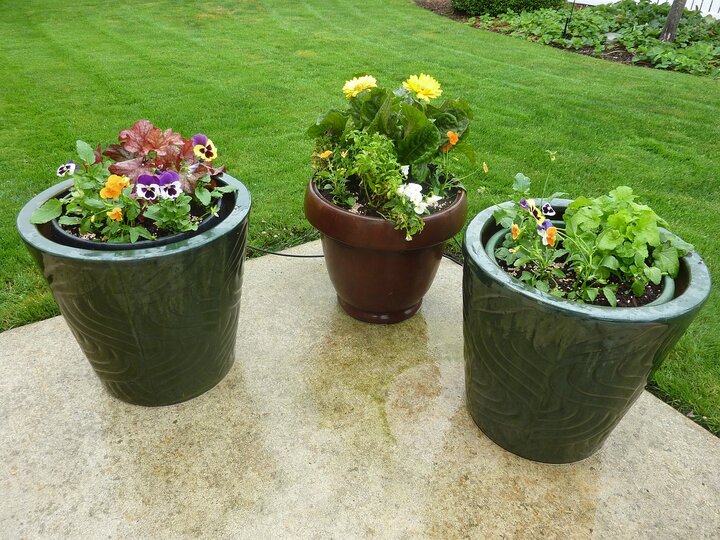Sarah Browning, Nebraska Extension Educator

Claypots, houseplant containers, ready for potting plants, herbs or flowers. Image by Pixabay.
If your houseplants have outgrown their pots it's time to gather up the potting soil and some new containers and give these plants new homes.

All of these characteristics are related to watering, often the key element in whether a plant lives or dies indoors. Winter is a particularly tricky time for watering because plants aren't growing much and aren't using much water.
Pot size is more than an aesthetic consideration. A large plant in a too-small container dries out quickly. That's one indication that a plant needs repotting. A small plant in an overlarge container not only looks lost in it but may suffer from too much water because, after watering, the relatively large volume of soil stays saturated for a long time.

Why all the concern about water? Because plant roots need air as well as water to function. Roots that remain in waterlogged soil for long periods tend to rot and die. Plants wilt as if they are dry, but more water is the last thing they need.
The third key factor is a drainage hole in the bottom of the container. Drainage holes permit excess water to escape.
Another advantage of drainage holes in the bottom of a container is that it provides the option of watering from the bottom. This is important with plants such as cyclamen, which doesn't tolerate water in its crown, and African violets, whose leaves are sensitive to cold water splashed on them.
Whether you water from the bottom or the top, it's important to empty any water left standing in the saucer after the soil is thoroughly moistened. If the pot is left sitting in water, the soil will keep taking up water as fast as it's lost to evaporation or taken up by plant roots, and the spaces between soil particles will remain filled with water rather than air.

All images from Pixabay.com
Search Our Archive
Associated Video
Starting with Containers
Nebraska Extension Educator Terri James discusses container gardening and tips for getting started.